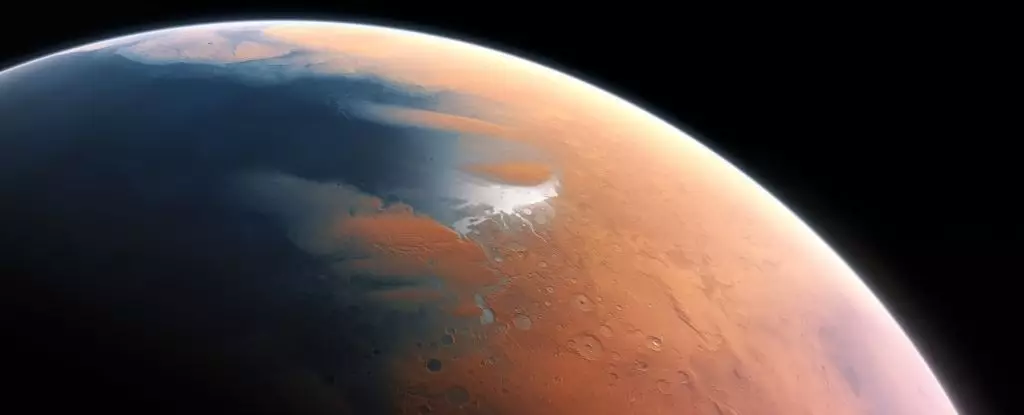Mars, our neighboring red planet, has long been a subject of fascination for scientists and space enthusiasts alike. Recent analysis of seismic data collected by the Mars InSight lander has shed light on the presence of massive reservoirs of liquid water deep below the Martian surface. While this discovery presents an intriguing piece of the Martian water puzzle, it also poses challenges in terms of accessibility and understanding the planet’s aquatic history.
Geophysicist Vashan Wright emphasizes the importance of understanding the Martian water cycle in unraveling the evolution of the climate, surface, and interior of Mars. Identifying the location and quantity of water on Mars is a crucial starting point in this endeavor. The abundance of minerals, terrain features, and ancient dry lake beds on Mars hint at a wetter past, prompting scientists to investigate where the water has gone over billions of years.
The presence of liquid water on Mars, hidden deep beneath the surface in fractured igneous rock layers, suggests a significant reservoir that could shed light on Mars’ potential habitability past and present. While this underground water source may not be readily accessible to humans, it provides valuable insights into the Martian water cycle and the planet’s capacity to sustain life. Geophysicist Michael Manga even speculates that this underground reservoir could be a habitable environment, much like deep Earth mines or the ocean floor.
Despite the discovery of these hidden water reservoirs, Mars continues to keep its water reserves shrouded in mystery. Previous detections of water on Mars have raised questions, and the latest findings indicate that the water-rich layer lies further below the surface than previously thought. If this deep water source is consistent across the Martian globe, it could potentially fill ancient oceans on the planet. However, further observations and analysis of Mars’ crust are needed to confirm these findings and unravel more secrets hidden beneath the dusty surface.
As we delve deeper into Mars’ geology and surface features, the discovery of liquid water reservoirs deep below the Martian surface opens up new possibilities for understanding the planet’s history and potential for life. While challenges remain in accessing and studying these hidden oceans, the data collected by the Mars InSight lander offer valuable insights into the Martian water cycle and its implications for Mars’ habitability.
The discovery of vast liquid water reservoirs on Mars represents a significant leap forward in our understanding of the red planet’s geology and potential for sustaining life. As we continue to unravel the mysteries of Mars, further exploration and analysis will be crucial in unlocking the planet’s secrets and expanding our knowledge of its hidden oceans beneath the surface.


Leave a Reply